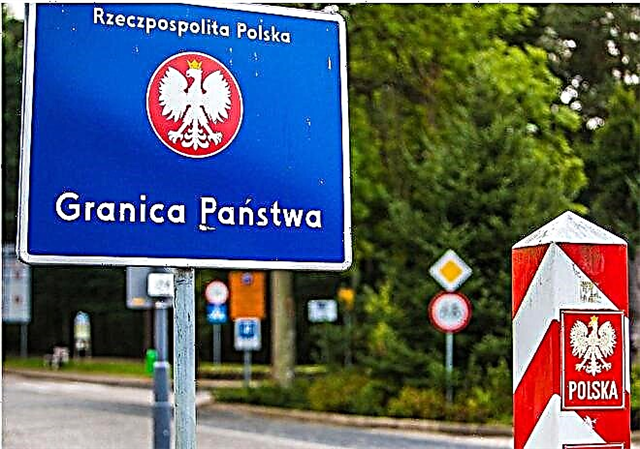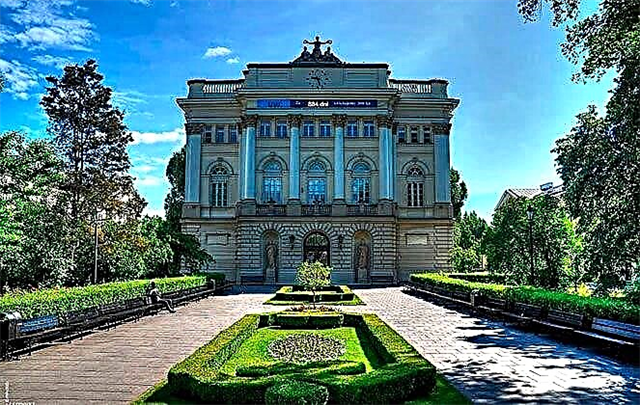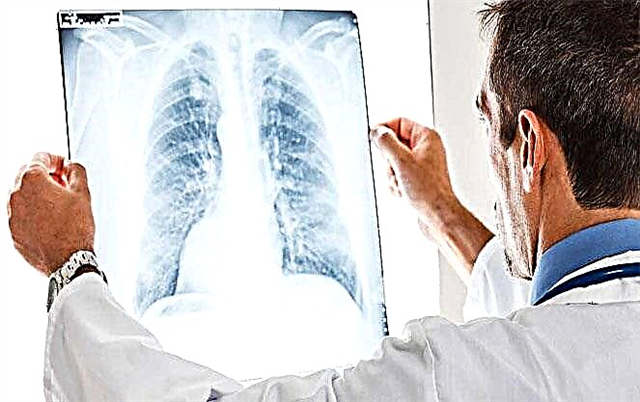Lung cancer is one of the most common oncological pathologies in the world. The statistics of the disease are very deplorable: 6 out of 10 cases die. For this reason, lung cancer treatment in Germany is one of the priority areas in most medical centers in the country.

Causes, sites of manifestation, stages and signs of lung cancer
For the most part, pulmonary oncology is a male pathology. Every fourth tumor in the male population of the planet is found precisely in the chest, while in women only every twelfth.
The reason for such a prevalence of malignant tumors in the lungs lies in the prerequisites for the onset of the disease, the most important of which is smoking. Numerous studies have shown that all people who smoke are at risk of developing lung cancer.
The thing is that more than 50 carcinogenic substances are concentrated in cigarette smoke, in addition, nicotine suppresses immunity.
In many countries, smoking is the cause of lung cancer in nine out of ten male patients.
Speaking about the causes of this pathology, one cannot discount the ecological situation. The risk of developing the disease increases the high concentration of radon, asbestos and dust in the air. This fact indicates that almost every inhabitant of the planet can develop malignant neoplasms in the lungs.
Medicine classifies this disease primarily by the place of manifestation and by the stage of development.
Let's start with the places where lung cancer can show up. According to this parameter, three types are divided:
- central - the main process occurs in the large bronchi. After some time, the tumor blocks the lumen of the bronchus, which causes the lung tissue to collapse;
- peripheral - develops in the peripheral parts of the bronchi. The danger of this type is that the diagnosis in most cases occurs already in the late stages, because for several years (up to 5 years), the symptoms of the disease do not clearly appear;
- mixed - malignant cells fill part of the lung or the entire organ. This type occurs in only five percent of cases.
Now let's talk about the stages of development of this disease. Usually there are 4 stages, but some experts divide the development of the disease into 6 stages.

We will provide a more detailed diagram:
- Zero stage. The patient has no symptoms. Neoplasms are practically not visible on a fluorographic image, the lymph nodes are not enlarged.
- First. The tumor in size does not even exceed three centimeters, and the lymph nodes remain unchanged. If cancer is diagnosed at this stage, the patient has every chance of being cured.
- Second. The third part of malignant neoplasms in the lungs is detected at this stage. The tumor in diameter can already reach from 3 to 5 centimeters, metastases in the lymph nodes are observed.
- Stage 3a. The size of the tumor exceeds 5 centimeters, the lesion extends already to the pleura and chest wall. Cancer cells (metastases) are already present in the bronchial nodes and lymph nodes. During this period, the symptoms are very pronounced, therefore, in more than half of the patients, the disease is diagnosed at this stage.
- Stage 3b. In this period, the size of the neoplasm is not a characteristic feature. At this stage, the disease affects the vessels, esophagus, spine and heart.
- Fourth. It is characterized by the spread of metastases throughout the body. The chances of a full recovery are almost nil.
Moving on to the symptomatology, it should be noted that a feature of this disease is the fact that the patient is not even aware of the presence of a neoplasm, especially in the early stages. If oncology manifests itself somehow, then few people react to these symptoms, because they are absolutely nonspecific and do not arouse suspicion. The visual signs in the early stages are different from the symptoms in the later ones.
Lung cancer is a disease of the respiratory system. For this reason, an unreasonable dry cough for several weeks should be alerted.
Sometimes the disease is accompanied by a hoarse voice, a characteristic wheezing when breathing. Difficulty swallowing food, shortness of breath, tachycardia may appear, since the tumor presses on the laryngeal nerve. Also in the early stages, a constant rise in temperature up to 37.5 degrees, chronic fatigue and weight loss are possible.
The absence of vivid symptoms is due to the fact that there are no nerve endings in the lungs. At first, the body does not react in any way to tumors in this area. It follows from this that if any of the above is detected, it is necessary to immediately go to the hospital and do a fluorography.
Obvious signs appear already in the last stages of the development of pulmonary oncology:
- Agonizing cough with mucus, which may contain blood or pus. Blood is the most dangerous sign that cancer is already in its advanced stages.
- Constant chest pain. Yes, there are no pain endings in the lungs themselves, so the pain indicates that the neoplasm is putting pressure on the walls of the chest cavity. Painful sensations can be observed in the shoulder, the outer side of the arm.
- Swollen lymph nodes.
- A low, but constant rise in temperature, a hoarse voice, chronic fatigue.
If any of these symptoms or several signs are manifested, it is impossible to delay the visit to the doctor in any case.
Diagnosis of lung cancer in Germany
Early detection of cancerous tumors increases the chances of recovery in 80% of cases. Aggressive disease metastases very quickly, so delay is like death. For this reason, the diagnosis of pulmonary oncology in Germany is a whole complex examination that allows you to quickly detect a malignant neoplasm and select the optimal treatment.
For many years, German clinics have been engaged in the diagnosis and treatment of such pathologies. It has developed an improved methodology for the detection and control of lung cancer.

Medical diagnostics of pulmonary oncology in Germany consists of several methods:
- X-ray of the lungs in two projections.
- CT scan. Allows you to detect not only neoplasms, but also metastases.
- Bronchoscopy. Thanks to this method, it is possible to examine the tumor and even take a piece of tissue for analysis.
- Endobronchial ultrasound. In this way, specialists conduct an ultrasound examination of not only the bronchi, but also other suspicious areas.
- Transthoracic biopsy. This method is used if it was not possible to take tissue for examination during bronchoscopy.
- Analysis for tumor markers.
- MRI. Use if X-ray cannot be used.
- Positron emission tomography and PET-CT are methods that can accurately determine the type of cancer and the stage of development.
The doctor chooses the most appropriate diagnostic method from those listed above, or prescribes additional examinations.
Popular treatments
There are several treatments available. The choice will depend on the stage of development of the disease. The main methods of treatment are radiation or chemotherapy, surgery.
So, surgical treatment is prescribed when the cancer cells are large enough. During the operation, the surgeon removes the tumor completely or some part of it - this will depend on the nature of the tumor and the place where it is located.
Chemotherapy is the main treatment for most patients. The patient is prescribed drugs that have a destructive effect on cancer cells.
Chemotherapy is prescribed before surgery or after surgery and as the main method of treatment of pulmonary metastatic oncology in the later stages.
Targeted or targeted therapy is prescribed in conjunction with chemotherapy or as an independent method, it consists in taking medications that can recognize malignant cells and destroy them.

Radiotherapy - irradiation of a neoplasm with a powerful beam of gamma rays.
Cyberknife is used when the patient is not suitable for surgical intervention.
Biological therapy allows you to act exclusively on the tumor.
German clinics where lung cancer is treated
The Munich Cancer Center, which includes a number of clinics, is one of the leading medical institutions in Germany and one of the largest treatment centers in Europe. Experienced specialists discuss each individual case at an interdisciplinary meeting in order to choose the optimal diagnostic and treatment method for each patient. Patients can receive drugs free of charge by participating (solely on their own) in experimental programs.
Here, for the treatment of pulmonary oncology, one of the most effective methods of radiation therapy, the cyberknife, is used. This technique allows you to completely remove a number of tumors, excluding recurrence.
Full medical support for cancer patients is provided by the Helios Pulmonary Clinic in the capital of Germany - Berlin. This medical institution uses chemotherapy and radiation therapy, as well as surgical treatment of pulmonary oncology.
Erlagen University Hospital is the largest complex, uniting 24 clinics, and is considered one of the best cancer research centers for cancer research.
An oncologist with 30 years of experience treats lung cancer in the oncology department at the Nordwest clinic in Frankfurt am Main.

The Charite Lung Oncology Clinic, based at the Berlin University Medical Complex, specializes in infectious diseases and pulmonology.
These are not all medical institutions in Germany that deal with the treatment of cancer, but the most famous of them. In these and other clinics, standard methods of treatment are used, such as chemotherapy, radiotherapy, surgical treatment using minimally invasive methods involving the use of a mini-video camera, and others, as well as innovative ones - radiation therapy, bronchoscopic or thoracoscopic methods.
Treatment prices
German specialists in the field of oncology are leaders in the treatment of cancerous tumors. It is clear that such medical services cost a lot of money. A special feature of undergoing treatment in Germany is the obligatory payment to the accounts of clinics even before the start of treatment. Some medical institutions require a maximum amount, and upon completion of all procedures, the balance on the account is returned to the patient.
Prices for all medical procedures are regulated by a special DRG system and are determined by the state.
The minimum cost of an examination for pulmonary oncology is 4000 euros. For surgical treatment, you will have to pay at least 20,000 euros.
The final cost is formed based on the treatment program, the stage of development of the disease and the general condition of the patient.
What is needed for treatment in Germany
To undergo a course of treatment in one of the German clinics, you must first receive a positive response from the chosen medical institution. To make a decision, the doctor needs the patient's medical records. For this reason, the initial diagnosis must be completed at home so that the German doctor can operate on some data.
You can independently contact the clinic or use the services of intermediary firms. Of course, such services will cost money, but the issue with the language barrier will be resolved, and the data from the medical report will also be translated into German here.
When a positive answer comes from a German clinic, you can proceed to the next stage - obtaining a medical visa.
Read all the details in the publication "Visa for treatment in Germany".
Rehabilitation measures
Treatment is not only an effective cure for the disease, but also a return to normal life. Considering that cancer is one of the most serious diseases, and its treatment methods are quite aggressive, the patient needs serious rehabilitation. Modern methods include procedures that are aimed at restoring all functions of the human body.
Thus, rehabilitation is a whole complex of measures, the purpose of which is to quickly restore the ability to live in a normal environment.

In German clinics, specialized rehabilitation programs have been developed, which are constantly being corrected and improved. Every recovery procedure, including nutrition, is under close supervision of specialists. A rehabilitation doctor selects an individual approach to each of his patients, and modern medical technology also allows the maximum result to be achieved.
Finally
Specialists of German clinics have made great strides in the treatment of pulmonary oncology. In specialized medical institutions in Germany, they offer innovative diagnostic methods that allow you to quickly identify the presence of a malignant neoplasm and select an effective method of treatment. Within the walls of German clinics, minimally invasive surgery, chemotherapy, radio, radiation therapy and other methods of treatment are used. In addition, innovative rehabilitation programs operate in cancer centers in Germany.











